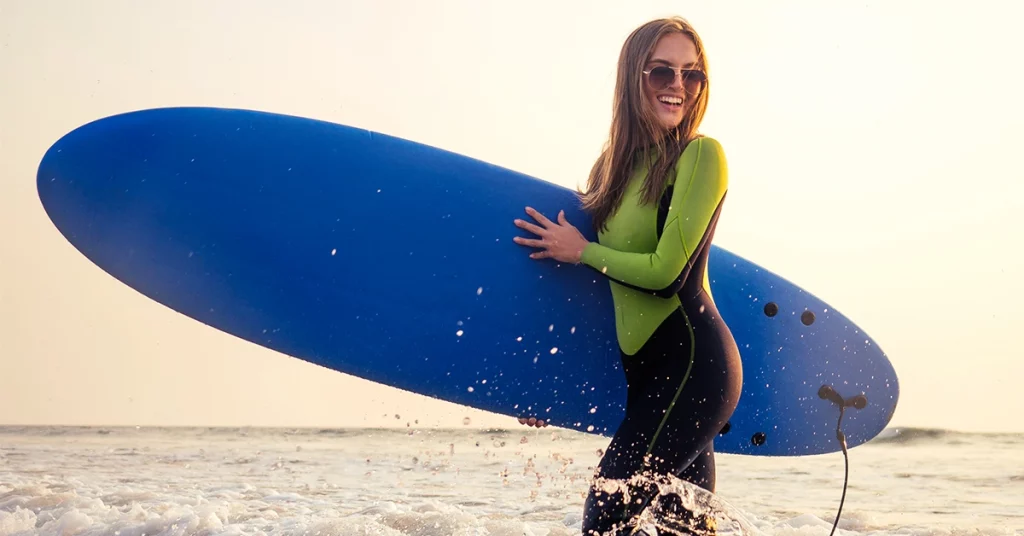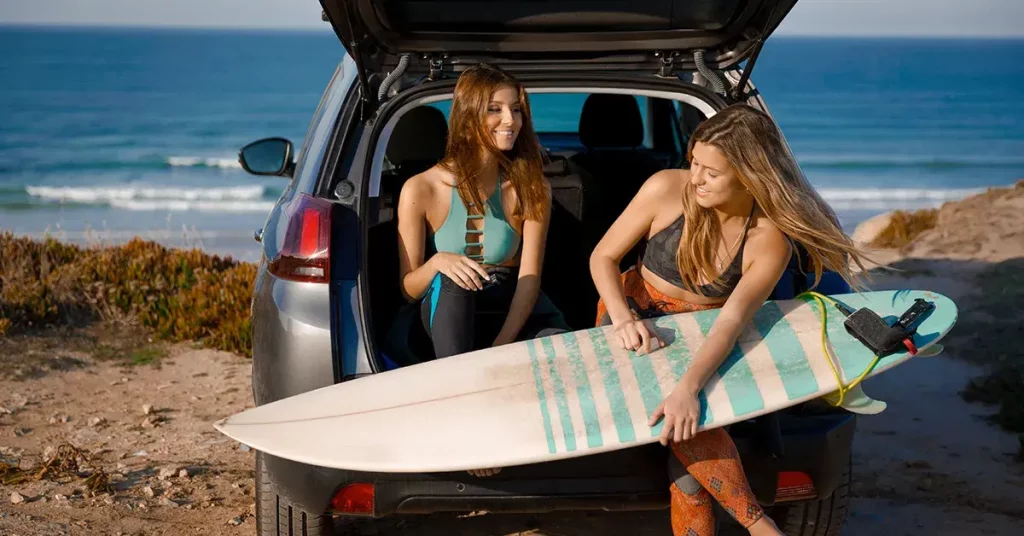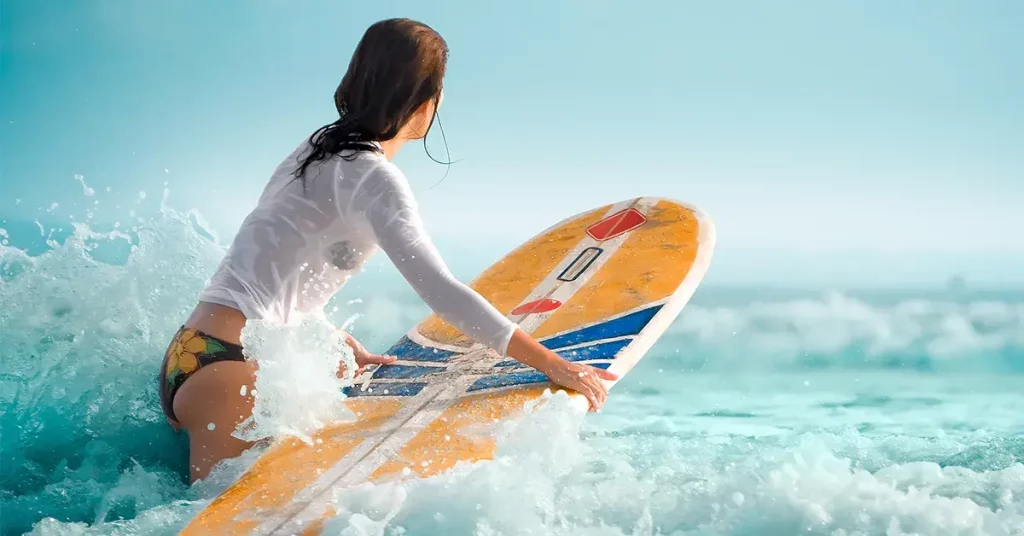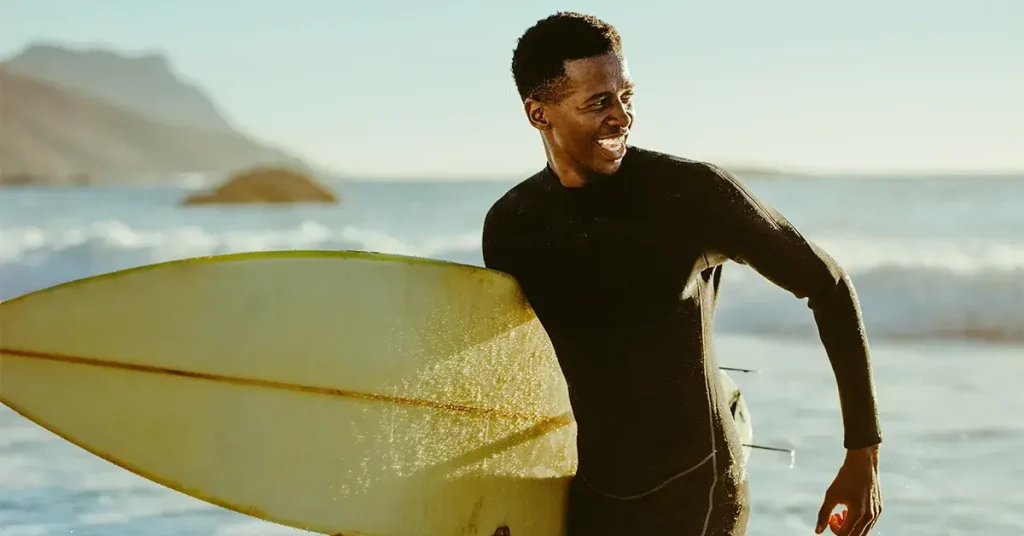In my experience, your surfboard weight can make or break your day out on the waves, and you need to understand what’s right for you to have a great day out, as weights can vary significantly.
Many novice surfers will ask, “how much does a surfboard weigh?” In reality, surfboard weights differ depending on your board. Surfboard materials vary widely from board to board, with some traditional surfboards weighing up to 20 pounds.
In short, weight matters, and fortunately, today’s boards are built for both novice and experienced surfers of all body types and needs. You don’t need a bigger surfboard or a heavy board to ride those waves like a pro.
Different Types of Surfboard Materials
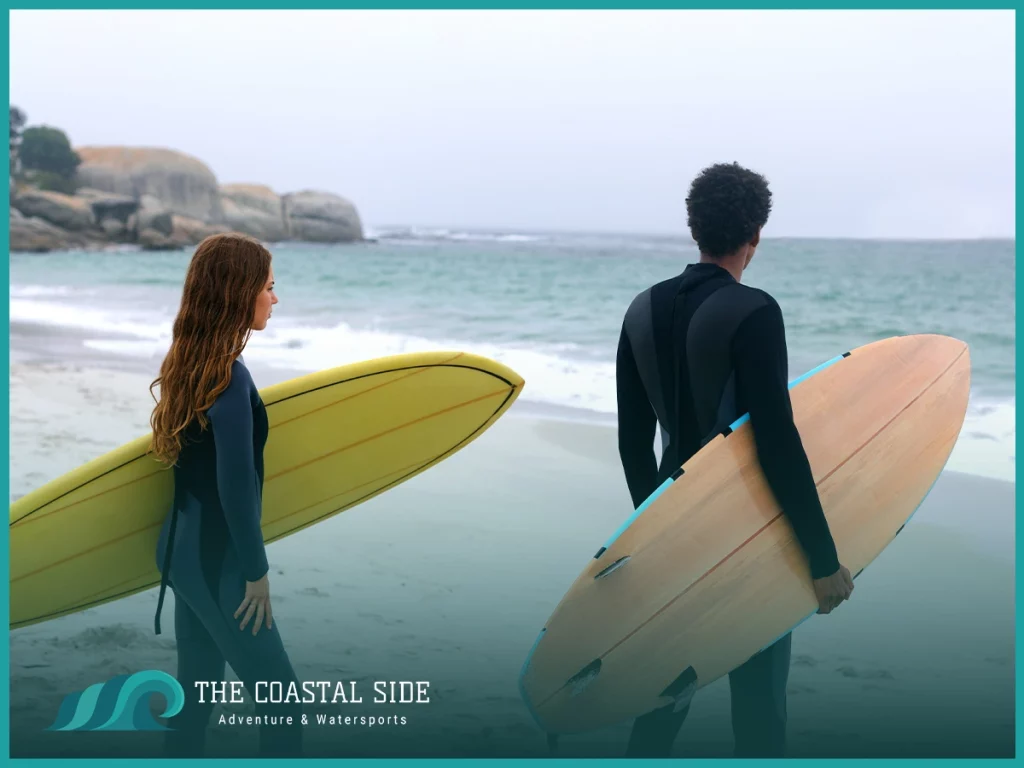
What you board weighs depends significantly on what it’s made out of. Understanding different surfboard materials will go a long way in helping you find the right board for you.
Polyurethane
A board with a foam core will almost always be lighter than your average surfboard weight, where polyurethane comes in. Construction materials like polyurethane are relatively new, coming into fashion after World War II.
These boards are excellent for catching waves with a foam core and a fiberglass body. There are several advantages to opting for a polyurethane board, specifically that your board weighs less than many others, although the actual weight can vary.
As a general rule, polyurethane is relatively easy to shape, so you can customize them to fit your needs. Aside from the inner foam core, you can adjust the board to fit your needs. These boards are also easy to manage, making them great for novices who want to tackle any wave type.
The downside to polyurethane is that these soft surfboards are much more fragile. The construction material itself means getting banged up on waves easier. If durability is a concern for you, you might want to go with a slightly heavier board.
Wood
Wood is the most standard construction material for your average longboard surfboard and what most people think of when they picture a standard board. Although you’ll usually find wood on longboard surfboards, you can see it on any size board these days. It’s an environmentally friendly, conventional construction material that adds more weight to the board.
As with most different types of surfboards, there are some downsides to wood boards. Their extra weight makes them slightly trickier to manage, and how they handle in the water can vary significantly from board to board. Still, if you want to be the coolest guy on the beach, you might want to invest in one of these boards.
Soft Top Surfboards
Soft top surfboards are a good bet if you’re in the market for something with more buoyancy. These boards are great for beginners because of their lighter weight and ease of use. Although some more traditional surfers will turn their noses up at soft top surfboards, they’re very effective at catching big waves, thanks to the wide nose and narrower tail.
If you’re new to surfing, consider opting for one of these wide boards with a soft top.
Epoxy
Epoxy boards have outer glassing and a foam core. As a general rule, the weight average of epoxy boards tends to be a lot lighter than the average weight of your typical longboard. Since they’re lighter, they’re much easier to use in the water, and beginners tend to love them.
Experienced surfers might have to have one of these boards on hand, too, since this surfboard length is more conducive to catching smaller waves near the shore. Many surfers prefer to have several varieties of boards, and your average short board can do wonders in the water.
The other benefit to epoxy is that it’s more environmentally friendly than different materials. Except for wood, these short boards generally are the best eco-friendly options around.
The Basic Surfboard Making Process Explained
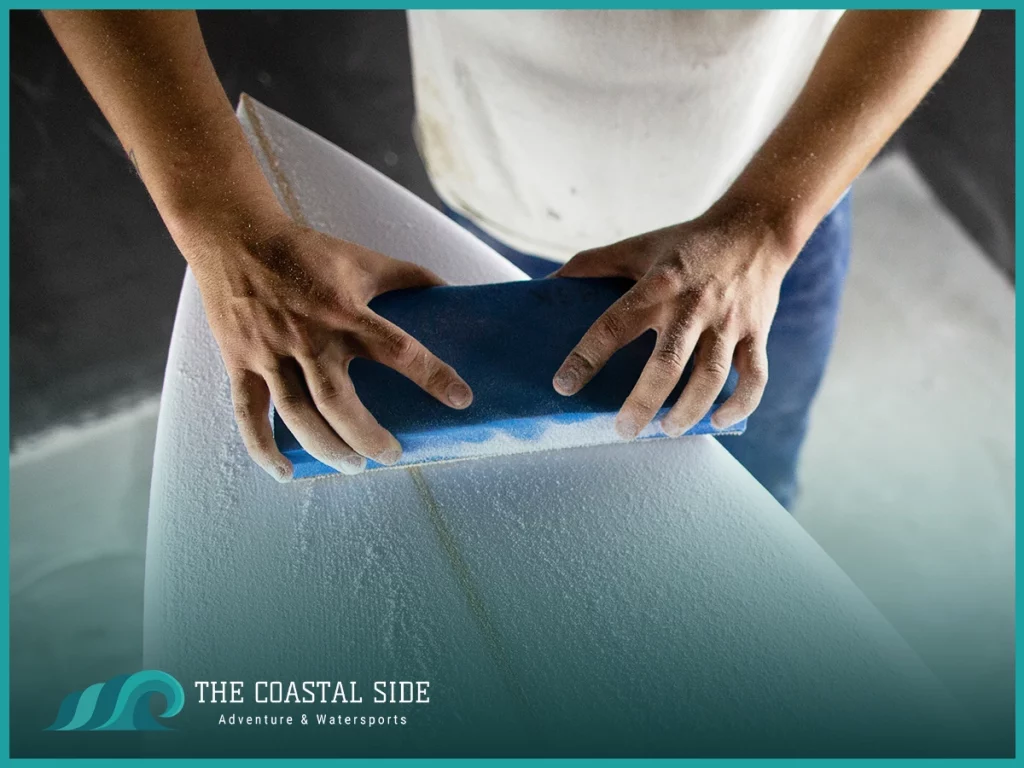
Making your own surfboard might seem like a daunting task. Even advanced surfers prefer to buy their boards rather than construct them. If you want to take on a new project or add some fantastic elements like camera mounts or waterproof cameras, you won’t want to consider doing a DIY board.
You can tailor short and long surfboards to meet your specifications, customizing the weight and shape to fit your particular body type. All you need are some simple tools, and you’re well on your way. Don’t worry if you don’t get it right away. There will always be a learning curve, and surfboard crafting is a proper art form.
First, you’ll need a place to practice your craft. Find a well-ventilated area where you can spread out. Garages or large sheds are excellent options. Then, prep your area to ensure that you’re not getting materials everywhere. Put down some newspaper or a tarp before you break out the tools.
Other things to consider are as follows.
- You will need some good light
- Having all your materials, like old wax and duct tape on hand is crucial
- Make sure your area is protected from the elements
- Keep your space strictly for board building
Building Your Board
To build the right surfboard, you’ll need a template. Use a thinner, pliable material like plywood to trace your board outline. The best way to do this is to use an existing surfboard. Make it as precise as possible.
Next, you’ll have to work out your materials. At this point, it’s a good idea to determine if you want a soft-top or a more traditional surfboard. If you have any questions about your needs, talk to your local surf shop to get more ideas.
Once you have your materials, clamp them down to your plywood template. The materials must sit right on the template if you want to get the size and weight right.
Now, it’s time for the fun stuff. Plane your board, and cover it in fiberglass cloth, making sure to pay attention to the board’s shape. This is when you’ll want to add traction pads and focus on the weight of your board.
If your surfboard is heavy, it will have more trouble in the water. To make sure that your board floats, use the appropriate materials.
Once you’re all done, you’ll want to drill a hole for your surfboard leash. The leash protects you in the water and keeps your board attached to you at all times.
Surfboard Types and Purposes/Surfing Style
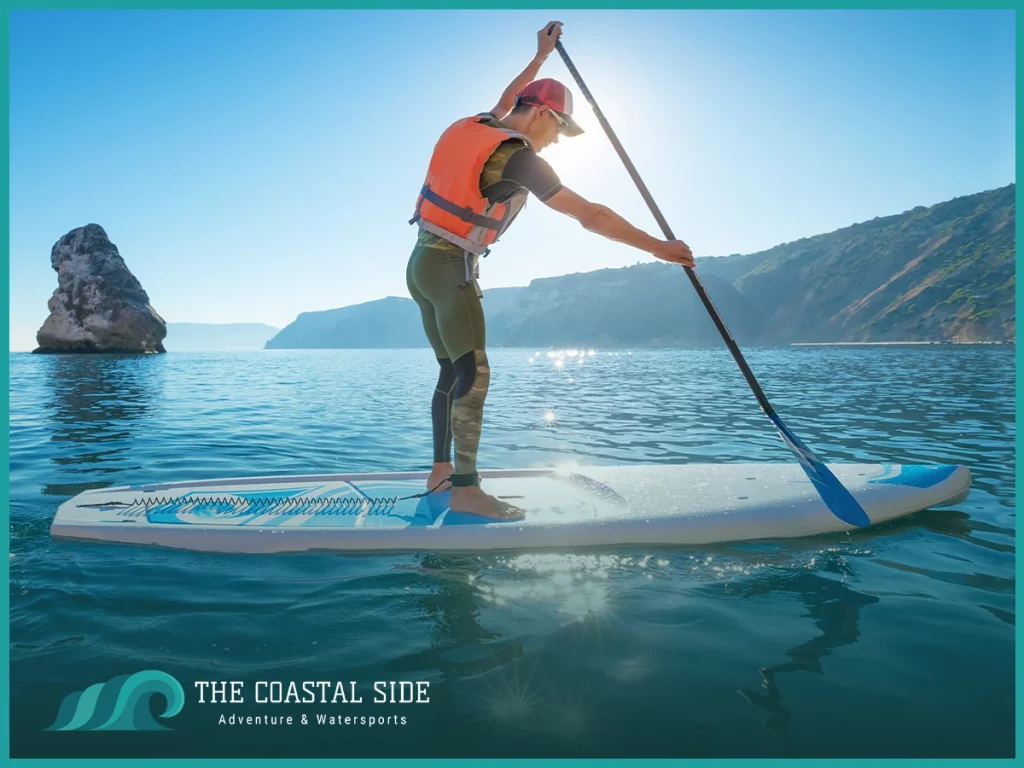
To select the best board for you, you need to think about your skill level and what you will use it for. You should also consider whether you have multiple boards or only one.
Shortboards
Shortboards have an upturned nose that helps you stay afloat in rocky waves. They’re great boards for keeping you agile in the water and are excellent for doing tricks out at sea. They’re also suitable for novices because they’re very buoyant.
Big Wave Boards
As the name suggests, these big boards are specifically for monster waves. You won’t be able to do smaller ones with them, and beginners might have some problems controlling them while at sea—your average big wave board weighs more than traditional ones.
Longboards
Longboards are excellent for catching both big and small waves, but novice surfers might have some trouble with them. This is because your average longboard weighs more than most other surfboards and are usually wooden.
Paddle Board
While not really a surfboard, paddle boards are sometimes thought to be very wide surfboards. They are useful for beginners or people learning to surf on new seas. They tend to be very buoyant, and your typical paddle board weighs less than longboards or big wave boards therefore giving newbies a chance to feel what the waves are like on a board.
Surfboard Parts
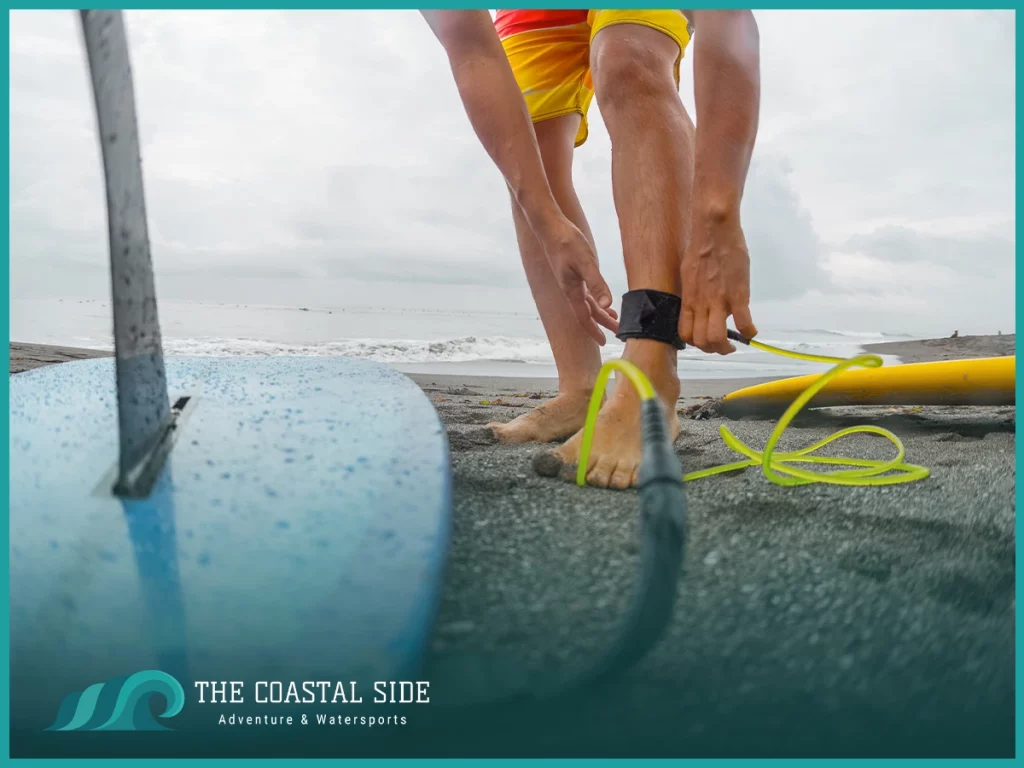
Understanding different surfboard parts will enable you to create your board from scratch or be able to customize your existing surfboard. It will also help you to become a better surfer overall.
Rocker
Your rocker refers to the curvature of the board. Heavy rockers make your board very sharply curved and can help you catch bigger waves and keep you steady at sea. Relaxed rockers give you a smaller curve and are good for flatter waters or smaller waves.
You’ll usually find curved rockers on larger boards. You can also have continuous or staged rockers, with start and end on a specific board of your board. The rocker doesn’t affect the size of the surfboard weight.
Leash
Your leash is one of the essential parts of your board and keeps you tethered to it if and when you wipe out. If you’re constructing your own board, you need to install both a leash plug and a leash. Leash plugs are fiberglass parts that attach to the back of your board and keep your leash in place.
Fins
Fins sit on the backside of your surfboard and can help you maintain balance and ride out larger waves. Fins are essential, especially for beginners. Once you get used to your fins, you’ll be able to do all sorts of tricks in the water, plus tackle larger waves with ease and skill.
Size and Style Weight Chart
If you’re wondering exactly how much each type of surfboard weighs, this chart will give you a general idea. Fiberglass boards are most commonly used by surfers as they are the lightest.
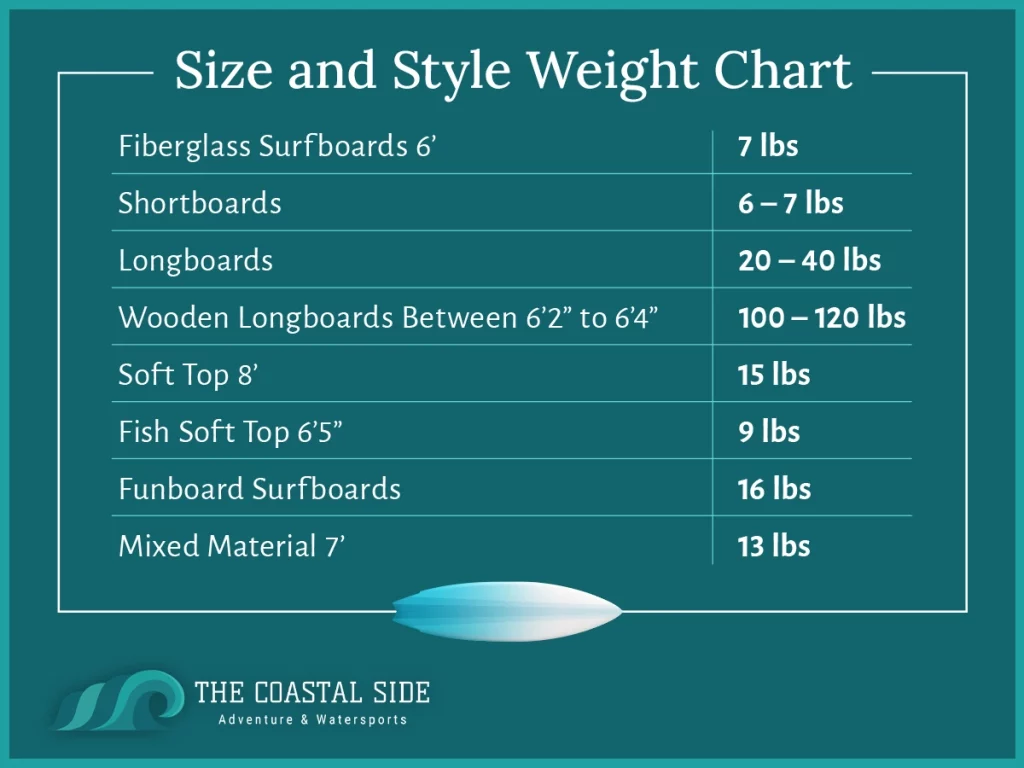
Conclusion
Understanding what makes your surfboard tick is one of the top ways to excel at the sport, and your surfboard’s weight is a big part of that. Take the time to understand more about the different types of boards today, and you’ll surely see a difference.

